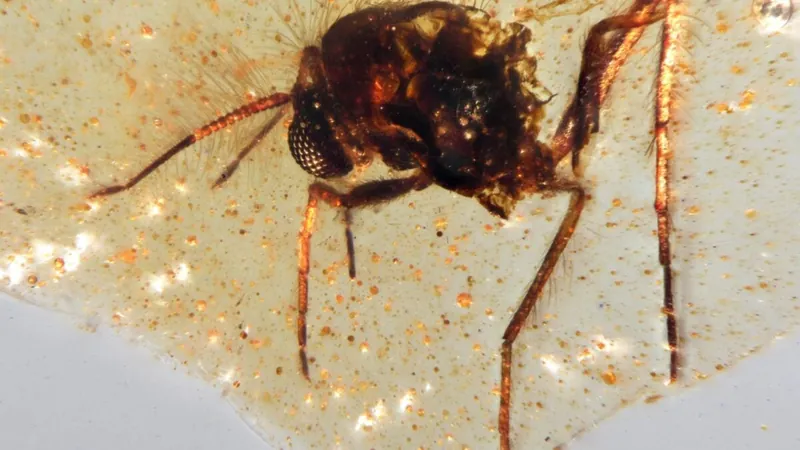
Unveiling the Past: South America’s First Amber-Preserved Insects Are Here!
2025-09-18
Author: Wai
A Groundbreaking Discovery in Ecuador
In an astonishing breakthrough, scientists have discovered South America’s first amber deposit brimming with fossilized insects and other preserved creatures. Found in Ecuador’s Genoveva quarry, these captivating half-transparent fossils offer a glimpse into ancient ecosystems dating back over 100 million years.
A Vast Treasure Trove of Ancient Life
According to a recent study published in Communications & Earth Environment, this remarkable site is not just any find—it’s the largest Cretaceous amber deposit in the Southern Hemisphere! Researchers, led by paleobiologist Xavier Delclòs from the University of Barcelona, have uncovered about 21 bio-inclusions, or trapped organisms, highlighting a previously bustling tropical rainforest during a time of significant environmental change.
"This discovery opens a new window into the forests of South America during the age of dinosaurs, preserving delicate creatures that rarely fossilize," Delclòs remarked in an interview.
The Process Behind Amber Preservation
Amber, which is fossilized tree resin, acts as an organic time capsule. The sticky resin traps insects and small organisms that venture too close, eventually hardening into amber and encasing their captured victims. While trees have produced resin for over 320 million years, large amber deposits only began forming around 120 million years ago.
Intriguingly, while amber often preserves smaller creatures, rare instances have led to the preservation of delicate tissues like muscles and even spider silk strands found in this latest discovery.
Peering Into a Lost Ecosystem
Delclòs emphasizes this is only the beginning. With six distinct insect orders already identified from a small sample, the potential for more finds is tantalizingly high. This scientific treasure trove offers researchers unprecedented opportunities to study the ancient ecosystems that thrived in what is today known as the Amazon.
A Multidisciplinary Approach Unlocks Secrets
The research team utilized cutting-edge techniques from diverse fields like geochemistry and paleobotany. By leveraging advanced tools, including a synchrotron particle accelerator, they were able to reveal intricate anatomical details of the insects, enhancing their understanding of this ancient rainforest ecosystem.
As Delclòs puts it, "Together, these lines of evidence will allow us to reconstruct, with extraordinary accuracy, the ecosystem that once flourished at the heart of the equator."
Looking Ahead: The Search for More Amber Deposits
Believing that additional amber deposits lie hidden in South America, Delclòs is already out in the field, eager to continue the search. With the potential to reshape our understanding of ancient biodiversity, this study marks an exciting new chapter in paleontological research.
As we dive deeper into the secrets preserved in this ancient amber, one thing is certain: the past has never felt more alive!



 Brasil (PT)
Brasil (PT)
 Canada (EN)
Canada (EN)
 Chile (ES)
Chile (ES)
 Česko (CS)
Česko (CS)
 대한민국 (KO)
대한민국 (KO)
 España (ES)
España (ES)
 France (FR)
France (FR)
 Hong Kong (EN)
Hong Kong (EN)
 Italia (IT)
Italia (IT)
 日本 (JA)
日本 (JA)
 Magyarország (HU)
Magyarország (HU)
 Norge (NO)
Norge (NO)
 Polska (PL)
Polska (PL)
 Schweiz (DE)
Schweiz (DE)
 Singapore (EN)
Singapore (EN)
 Sverige (SV)
Sverige (SV)
 Suomi (FI)
Suomi (FI)
 Türkiye (TR)
Türkiye (TR)
 الإمارات العربية المتحدة (AR)
الإمارات العربية المتحدة (AR)